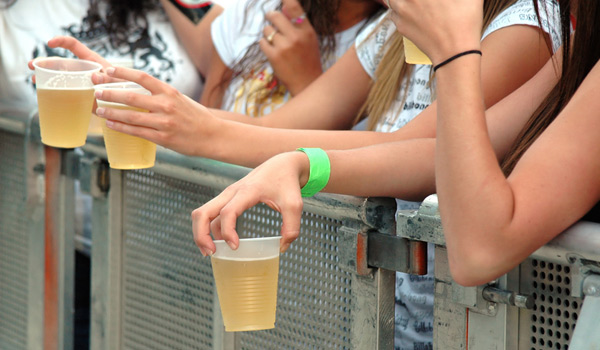Teens at Smaller Schools May Delay Drinking

Teens' positions within their school's social network may influence when they start drinking alcohol, a new study says. The teenagers who started drinking over the course of the one-year study were the ones with the most popular friends and the most "friends of friends." In addition, teens who attended schools with "dense" social networks (with a high number of social ties between individuals) were more likely to start drinking than were those from schools with less-dense networks, the study found. The findings suggest smaller schools may serve to delay the start of students' alcohol use because they "provide a smaller number of peers an adolescent can reach on their own or through their friends," said study researcher Marlon Mundt, of the Department of Family Medicine at the University of Wisconsin, Madison. This could explain why kids at private schools in the study were also less likely to start drinking, Mundt said. Friendship and alcohol use Teen drinking is a major public health problem, the researchers said. About 25 percent of Americans start drinking by the time they are 13 years old, according to a 2005 report from the Centers for Disease Control and Prevention. Drinking before the age of 14 is associated with a four-fold increase in the risk of becoming an alcohol-dependent adult, Mundt said. Mundt analyzed data from a nationally representative survey, conducted in 1995 and 1996, of 2,610 students in grades 7 through 11.The adolescents were asked whether they had ever drunk alcohol when they were not with their parents. Kids who answered "no" to this question in 1995 and "yes" in 1996 were considered to have initiated alcohol use. Students also had to name up to five male and five female friends. The researchers used this information to construct a model of the school's social network. An adolescent's risk of alcohol initiation increased by 13 percent for every popular friend he or she had, the study showed. "Popular friends" were defined as people who were listed by a lot of othersas a friend. For every 10 friends who could be reached through three steps of friendship (that is, people who were friends of friends of friends), an adolescent's risk of alcohol initiation increased 3 percent. However, the biggest factor influencing alcohol initiation in the study was whether the students had friends who drank. Having a friend who drank increased the risk of alcohol initiation by 34 percent. Target the popular people Efforts to reduce teen drinking could target popular kids, as they have more social connections and may influence the behaviors of others, Mundt suggested. More work is needed to see if the results apply to online social networks as well, he said. A study published earlier this year found teens who drink alcohol spend more time using the computer for activities such as social networking than do those who don't drink alcohol. The study is published in the September/October issue of Academic Pediatrics. Pass it on: The characteristics of a teen's social network influence when he or she will start drinking.
This story was provided by MyHealthNewsDaily, a sister site to Live Science. Follow MyHealthNewsDaily staff writer Rachael Rettner on Twitter @RachaelRettner. Find us on Facebook.
Get the world’s most fascinating discoveries delivered straight to your inbox.

Rachael is a Live Science contributor, and was a former channel editor and senior writer for Live Science between 2010 and 2022. She has a master's degree in journalism from New York University's Science, Health and Environmental Reporting Program. She also holds a B.S. in molecular biology and an M.S. in biology from the University of California, San Diego. Her work has appeared in Scienceline, The Washington Post and Scientific American.


